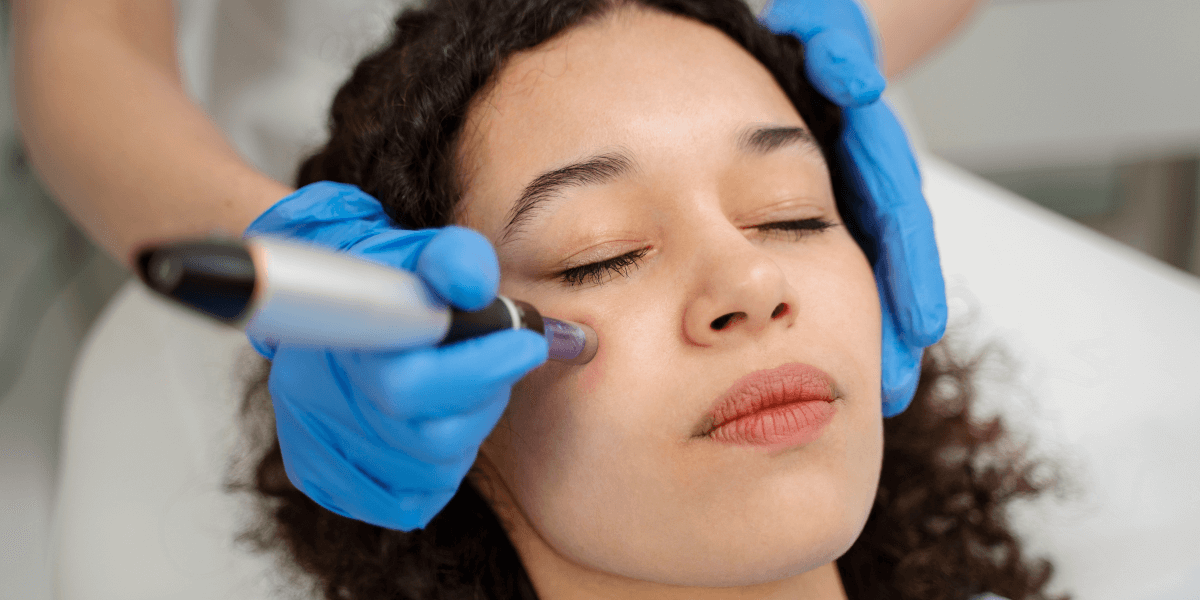Looking your best is important to you, and it shows. With aging comes wrinkles, laugh lines, and sagging skin that defies gravity. To counteract the effects of time on your face, you can get a dermal filler procedure. But with so many different dermal fillers available today, which one is right for you? Each dermal filler has its own set of pros and cons. Some are more affordable than others; some require a more in-depth recovery period; some are more effective at reducing wrinkles or fine lines, and others are more adept at treating dynamic wrinkles (lines that form with the movement of the facial muscles). Understanding what each type of dermal filler offers will help you determine which one is right for you.
What Is a Dermal Filler?
Dermal fillers are injectable cosmetic treatments used to smooth wrinkles, fill in deep lines, and add volume to areas of the face that have lost volume due to aging. Each filler works differently, but generally, they are made up of hyaluronic acid (HA) or calcium hydroxylapatite (CaHA ). Dermal fillers are semi-permanent treatments; they are designed to last between 6 months and 2 years. Dermal fillers are particularly helpful for people who want to delay the effects of aging but do not want to undergo a surgical facelift. Dermal fillers are non-surgical treatments that are administered with a tiny needle and can be performed in a doctor’s office. They can be used to treat different parts of the face, including in and around the lips, cheeks, nasolabial folds, around the eyes, and shaping of the forehead, temples, nose, chin, and jawline.
Hyaluronic Acid Dermal Fillers
The most common type of dermal fillers is hyaluronic acid (HA) fillers. Juvederm, Restylane, and Voluma are examples of some of the most common HA fillers. They have been around for many years. Some of the newer HA fillers are created in novel ways to produce a more natural HA filler that replicates our own HA. Versa’s wet milling technology and unique formula are what make it unique. Because all of the particles are uniform and perfectly spherical, Versa is distinctive. RHA® is manufactured differently than other HA dermal fillers. RHA® is made from hyaluronic acid—however, it is manufactured in a gentle fashion. This procedure helps maintain the natural structure of the hyaluronic acid, mimicking the natural hyaluronic acid in your skin. While HA fillers are best for restoring lost volume in the cheeks, they can also treat wrinkles, nasolabial folds, marionette lines, pre-jowl sulcus, lips, fine lines around the mouth, under the eyes, among many other locations of the face, and various areas of the body.
See Also: Is It Safe to Go For Dermal Fillers?
Calcium Hydroxylapatite Fillers
Calcium hydroxylapatite (CaHa) is another type of dermal filler that is commonly used to plump up the face. Calcium hydroxylapatite dermal fillers include the original Radiesse. These fillers are good for treating wrinkles and folds, as well as adding volume to the cheeks. One unique feature of calcium hydroxylapatite is that it can be customized to your needs. Although it is safe in many areas of the face, CaHa cannot be used for lip augmentation, fine lines around the mouth, or under the eyes.
How Long Do Fillers Last?
Most fillers last approximately 6-18 months. But the longevity of each filler depends on a person’s body and how well their body metabolizes the implant. Some people metabolize fillers quickly, while others metabolize them more slowly. This is why it’s best to discuss the longevity of fillers with your doctor. He or she can tell you which filler is best for you based on your anatomy and goals.
Side Effects of Fillers?
While dermal fillers have a high success rate, they do come with some side effects. Some of the most common side effects include swelling, bruising, and pain around the injection site. Swelling typically subsides within a few days. Bruising, on the other hand, can last from 1-2 weeks in some cases. While these side effects are common, they are typically very treatable. Your doctor may prescribe anti-inflammatory medication, as well as a topical or oral pain reliever to help ease the pain and swelling. Rarely some people can experience allergic reactions to fillers. If you feel like you are having an allergic reaction to a dermal filler, talk to your doctor right away. There are several injection sites for dermal fillers; however, if inadvertently injected into an artery of the face, it may result in vascular occlusion. Fortunately, this is a rare occurrence, and treatment is possible when using an HA filler but not with a CaHa filler.
Which One Is Right for You?
Hyaluronic acid dermal fillers (Juvederm, Restylane, Voluma, Belotero Balance, Revanesse, RHA collection) – These fillers are best for filling wrinkles and fine lines. They are also great for restoring volume to the lips and cheeks. They have a shorter recovery time and last approximately 6-18 months. Calcium hydroxylapatite fillers (Radiesse)- These fillers are designed to last a bit longer than HA dermal fillers, approximately 1.5 years. They are also good for treating wrinkles and folds and restoring volume to the cheeks.
See Also: Filler vs. Thread Lift: Which Is Better?
Summary
The dermal filler that best meets your needs is the one that is best for you. Choosing the right dermal filler should fit your budget, resulting in the look you desire and a favorable risk profile. By understanding which types of fillers are out there, you can make an informed decision about which one is right for you. The above list of dermal fillers is only a sampling of the options out there. If you are interested in cosmetic enhancement and want to learn more about dermal fillers, speak with a board-certified physician. With the guidance of a doctor, you can get the facial features you desire.



